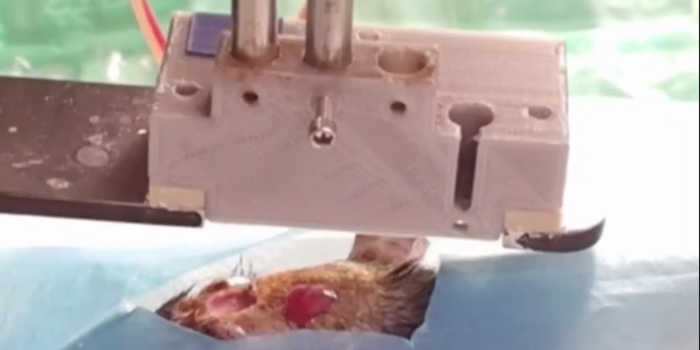In a groundbreaking achievement, researchers have successfully utilized 3D printing technology to directly apply multi-layered, living skin onto significant injuries in rats, heralding a new era of scar-free skin repair.
The skin of the head and face plays a crucial role in both physical protection and personal identity. However, injuries or surgeries in these areas often lead to scarring and permanent hair loss, impacting individuals’ confidence and self-esteem. Despite advances in plastic surgery, repairing full-thickness skin loss in such sensitive regions remains challenging. Yet, researchers from Pennsylvania State University have achieved a significant milestone by becoming the first to bioprint full-thickness, living skin with the potential for hair growth during surgery on rats, effectively addressing substantial skin deficits on the animals’ heads.
Lead researcher Ibrahim Ozbolat explains, “Reconstructive surgery for trauma or disease-related damage to the face or head often results in imperfections such as scarring or hair loss. Our work demonstrates the feasibility of bioprinting full-thickness skin with hair-growing potential in rats, bringing us closer to achieving more natural and aesthetically pleasing reconstructions in humans.”

This pioneering approach involves three-dimensional printing of living skin layers directly onto the injury site, utilizing a unique bioink composed of adipose tissue-derived extracellular matrix and stem cells, along with a clotting solution. By precisely controlling the co-delivery of these components, the researchers successfully printed the hypodermis layer, which plays a crucial role in wound healing and hair follicle generation, leading to near-complete wound healing within two weeks in their experiments on rats.
Moreover, the bioprinted hypodermis exhibited the beginnings of hair follicle development, indicating the potential for hair growth. Ozbolat notes, “Fat-derived stem cells may influence the extracellular matrix, creating a supportive environment for hair follicle formation. We aim to further enhance this process to achieve controlled hair follicle development.”

The researchers envision a wide range of applications for their technology, including dermatology, hair transplants, and reconstructive surgeries, where it could significantly improve aesthetic outcomes and patients’ mental well-being. By combining their skin regeneration technology with previous advancements in 3D-printed bone and pigment matching, they aim to achieve precise and natural-looking reconstructions, potentially reshaping the landscape of regenerative medicine.
The study, showcasing the transformative potential of 3D-printed living skin, was published in the journal Bioactive Materials.


